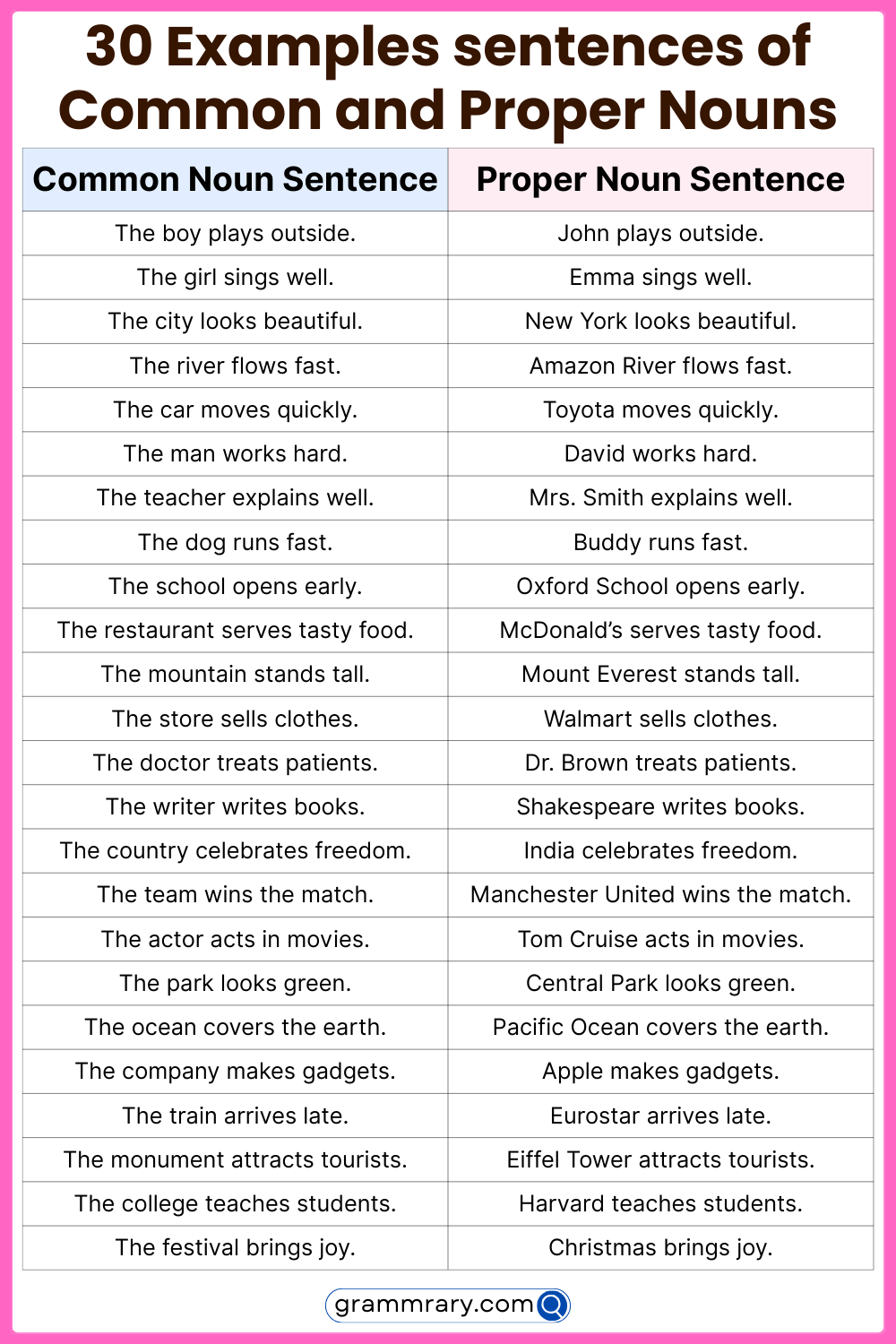When it comes to understanding the English language, one of the basic concepts that often confuses learners is the difference between common and proper nouns. Nouns are words that represent people, places, things, or ideas, and they can be classified into two main categories: common nouns and proper nouns.
Common nouns are general names given to people, places, things, or ideas. They do not refer to any specific individual or entity and are written in lowercase letters unless they start a sentence. Examples of common nouns include “dog,” “city,” “book,” and “happiness.”
Common and Proper Nouns Difference
Proper nouns, on the other hand, are specific names given to individual people, places, things, or ideas. They always begin with a capital letter, regardless of their position in a sentence. Proper nouns identify a particular entity and distinguish it from others. Examples of proper nouns include “Buddy” (a dog’s name), “New York City,” “Harry Potter” (a book title), and “Christmas” (a holiday).
One key difference between common and proper nouns is that common nouns can be used to refer to any member of a general category, while proper nouns refer to a specific individual or entity. For example, “dog” is a common noun that can represent any canine animal, while “Buddy” is a proper noun that refers to a specific dog belonging to someone.
Another distinction is that common nouns are not capitalized unless they start a sentence, while proper nouns are always capitalized. This capitalization helps to differentiate proper nouns from common nouns and give them the importance and specificity they deserve.
In conclusion, understanding the difference between common and proper nouns is essential for using language effectively and accurately. Common nouns are general names that refer to any member of a category, while proper nouns are specific names that identify individual entities. By recognizing when to use each type of noun, you can communicate more clearly and convey your ideas with precision.
